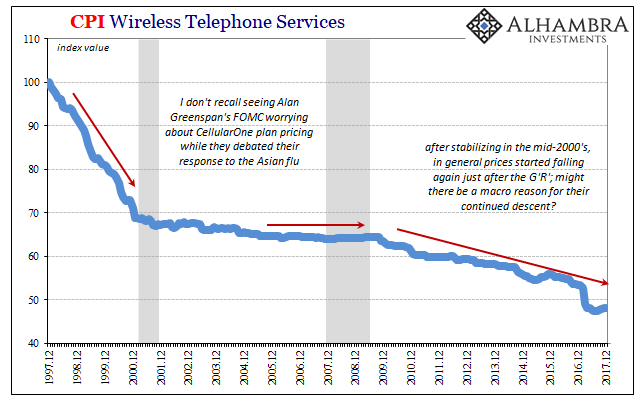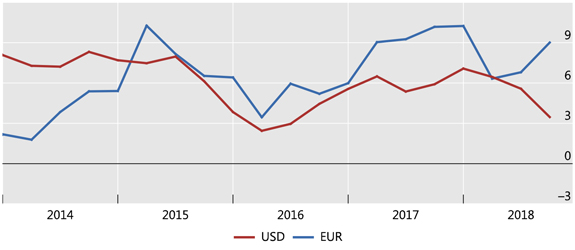About the author: Benn Steil is director of international economics at the Council on Foreign Relations and author, most recently, of The World That Wasn’t: Henry Wallace and the Fate of the American Century.
Federal Reserve Chair Jay Powell, asked on Nov. 7 if he would resign at the request of President-elect Donald Trump, gave a clear and blunt response: “No.” Powell further denied that the incoming president, who has criticized him harshly, had any authority to force him out. Such an effort, he said, would “not be permitted under the law.”
Powell, however, may not have the last word on the matter. The Fed has no clear legal standing to challenge his removal, and he would likely have to fund a fight himself.
Yet even if Powell were to survive such a fight, Fed independence under a Trump White House is not ensured. There are other ways for the president to influence the conduct of monetary policy.
Let me explain.
The Federal Open Market Committee has the sole legal authority to conduct monetary policy. Five of its 12 members are Federal Reserve Bank presidents. These positions are not presidential appointments and therefore clearly beyond the control of the White House. But an obscure piece of federal legislation actually gives the president an opportunity to control monetary policy through a smaller set of FOMC members, who are presidential appointees. These are the seven members of the Fed’s Board of Governors, who also serve on the FOMC. This subset has exclusive control over the primary tool through which monetary policy is actually conducted.
This anomaly was created by legal changes and shifts in the conduct of monetary policy since the financial crisis of 2008-2009. Prior to the crisis, the FOMC set a target for the so-called federal funds rate, the interest rate at which depository institutions lend balances to each other overnight. The Federal Reserve Bank of New York would then conduct open-market operations—buying and selling securities—to nudge that rate toward the target. It did this by affecting the supply of banks’ reserve balances at the Fed, which go up when they sell securities to the Fed and down when they buy them.
The Fed kept the level of reserves in the system low enough that some banks needed to borrow from others to meet their requirements. This practice ensured the fed funds rate’s importance within the financial system. The cost of borrowing through other means tended to move up and down with the fed funds rate, giving the Fed effective power over the cost of short-term credit broadly.
The Fed’s response to the financial crisis forced changes in how the central bank implemented its monetary policy. During the crisis, the Fed conducted large-scale purchases of assets from the banks. These quantitative easing programs, as they are known, drove up the volume of excess reserves, or reserves beyond those banks are required to hold, to unprecedented levels. A consequence of this is that many institutions could fulfill their reserve requirements without needing to borrow, so competition for reserves weakened. Small changes in the supply of reserves no longer induced the same changes in the cost of borrowing them that they once did. This meant that open-market operations were no longer sufficient to drive the cost of borrowing in the fed funds market to the FOMC’s target. In 2008, as the size of the Fed’s balance sheet rose, the fed funds rate became volatile and started to deviate markedly from the FOMC’s target.
This is where legislation becomes important. The Fed gained authority to pay interest on reserves under Section 201 of the Financial Services Regulatory Relief Act of 2006, later modified by the 2008 Economic Stabilization Act. As of Oct. 1, 2008, these changes gave the Fed a new tool to implement monetary policy. Paying interest on reserves helps to set a floor under short-term rates because banks that can earn interest at the Fed are unwilling to lend to others below the rate the Fed is paying.
Since 2008, then, the Fed has been using its rate of interest on reserves as its primary tool to achieve its fed funds target rate. But to reiterate, the 2006 Act gave authority for setting that rate to the presidentially appointed Board, and not to the FOMC. When I first pointed this out in print back in 2015, former Fed chair Ben Bernanke protested that this was only a “technical point”—one which long-standing custom would make irrelevant. And, indeed, custom carried on.
But under a second Trump administration, my “technical point” could be highly consequential. Here is how.
The Federal Reserve Act stipulates that the interest rate on reserves should not “exceed the general level of short-term interest rates,” but does not prevent the Board from setting it well below the general level of short-term interest rates. This means that the FOMC could decide that short-term rates should rise to, say, 5%, while the Board, thinking this misguided, or under pressure from the president, could decide to cut the rate on reserves to, say, 4%. Under certain market conditions, it might be difficult for the trading desk at the New York Fed to conduct open-market operations sufficient to achieve the 5% target set by the FOMC. Selling Treasuries, for example, could raise longer-term interest rates more than the short-term ones the Fed has historically targeted. It could also mean realizing large balance-sheet losses, thereby setting up a political battle with the Trump administration or Congress. Overnight rates would therefore likely trade close to the Board-determined 4% rate on reserves.
Some members of Congress have attempted to preclude confusion as to which body conducted monetary policy. Section 505 of former Sen. Richard Shelby’s (R., Ala.) draft 2015 Financial Regulatory Improvement Act would have transferred the authority to set the interest rate on reserves to the FOMC, and would therefore have restored the full committee’s ability to control short-term rates generally. Ironically, it was Democrats who objected to the Act, on the grounds that the Reserve Bank presidents serving on the FOMC were quasi-private appointments. But unless and until such an act is passed, the Board, and not the FOMC, will have the effective power to control rates.
Here is where President Trump comes in.
The most important way for him to control both the Board and the FOMC remains replacing Chair Powell—if that is possible. But it is not the only way. Two appointees from Trump’s first term remain on the board: Christopher Waller and Michelle Bowman. Incoming Vice President JD Vance recently cited Bowman favorably. She has been widely mentioned as a successor to Democratic appointee Michael Barr as vice chair for supervision when his term (as vice chair, but not governor) expires in July 2026. Democratic appointee Adriana Kugler’s term expires in January 2026, after which Trump can replace her with a loyalist. Should Waller and Democratic appointees Barr, Philip Jefferson, and Lisa Cook decide to pursue other opportunities before their Board terms expire, Trump would have yet more room to control the Board and its power over rates.
In short, sustaining Fed independence in the setting of monetary policy will require more than Jay Powell’s continuation as chair—a position that is, in any case, as a matter of law, no more than first-among-equals in that sphere. Unless the lame-duck Congress should miraculously transfer control over interest on reserves from the Board to the FOMC, then, the former could emerge as a vehicle by which the Trump White House drives monetary policy.
Source: https://www.barrons.com/articles/trump-fire-fed-powell-independence-86abd73a?st=JD96oc



In the long run, all these close range stuff does not matter. The Fed, like any Central Bank in the world, is no more than a glorified “money printer” for the government and the State. Even if their origin is private, such it is claimed about the Fed, the monopoly over money is a public concession, which makes any central bank a tool of the State, and also of the government in turn. In fact, in this light the ECB is less pretentious in comparison, it is clearly just a bureaucratic tool, nothing more. Not a power counter-balance.
Stepping back and looking at the architecture of incentives, any central bank will eventually “bend the knee” and provide as much liquidity as the fiscally irresponsible treasure of its controlling State requires. That is their true mission, allowing fiscal irresponsibility to last longer and grow at the expense of having worse consequences later.